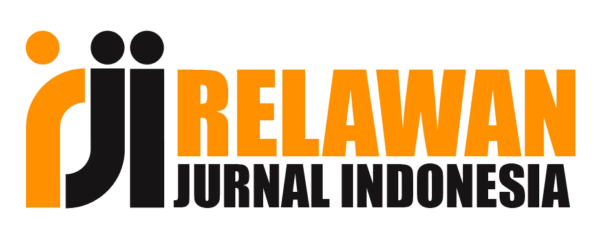PROFIL MOTIVASI BELAJAR IPA SISWA SEKOLAH MENENGAH PERTAMA DALAM PEMBELAJARAN IPA BERBASIS STEM
Abstract
ABSTRAK
Ilmu pengetahuan dan teknologi yang semakin berkembang pesat menuntut manusia untuk lebih meningkatkan kemampuan dirinya untuk dapat bersaing dalam lingkup nasional maupun global. Tidak hanya dibutuhkan kemampuan kognitif tetapi juga perlu softskills yang mendukung keterampilan pada abad 21. Pembelajaran berbasis STEM (Science, Technology, Engineering, and Mathematics) merupakan salah satu pembelajaran yang mampu melatih keterampilan abad 21 tersebut. Tujuan penelitian ini adalah untuk mengidentifikasi profil motivasi belajar IPA siswa dalam pembelajaran IPA berbasis STEM. Profil motivasi yang diukur mencakup 5 komponen yaitu intrinsic motivation, self-determination, self-efficacy, career motivation, dan grade motivation. Penelitian yang dilakukan menggunakan metode kuantitatif dengan analisis data statistik deskriptif. Penelitian dilakukan terhadap siswa kelas STEM (ekstrakurikuler) di salah satu SMP Negeri di kota Bandung dengan jumlah siswa sebanyak 25 orang. Profil motivasi belajar IPA diukur menggunakan instrumen yang diadaptasi dari Science Motivation Questionnaire II (SMQ). Hasil penelitian menunjukan bahwa 24% siswa memiliki motivasi belajar IPA yang sangat tinggi, 68% siswa memiliki motivasi belajar IPA yang tinggi, dan 8% siswa memiliki motivasi belajar IPA yang sedang. Tidak ada siswa yang memiliki motivasi rendah atau sangat rendah. Berdasarkan hasil penelitian, dapat disimpulkan bahwa dalam pembelajaran berbasis STEM, secara keseluruhan siswa memiliki motivasi belajar IPA yang tinggi.
Kata Kunci: Pembelajaran IPA berbasis STEM; Motivasi Belajar IPA
ABSTRACT
Science and technology are growing rapidly demanding human to further enhance his ability to compete in national as well as global scope. Not only required cognitive abilities but also required softskill which included 21st century skills. STEM-based learning (Science, Technology, Engineering, and Mathematics) is one of the lessons that can train 21st century skills. This research was carried out to indentify students’ science learning motivation profile in STEM-based science learning. the measured motivational profile includes 5 components such as intrinsic motivation, self-determination, self-efficacy, career motivation, and grade motivation. The research was conducted using quantitative method with descriptive statistical data analysis. Sample of this research were 25 students who’s involved in STEM extracuricullar in one of junior high school in Bandung. Students’ science learning motivation profile measured using an instrument adapted from Science Motivation Questionnaire II (SMQ). The results showed that 24% of students have a very high secience learning motivation, 68% of students have a high science learning motivation, and 8% of students have a moderate science learning motivation. There is no student has low or very low motivation. Based on the research result, it can be concluded that in STEM-based science learning, overall students have high science learning motivation.
Keywords: STEM-based Science Learning, Science Learning Motivation
Full Text:
PDF (Bahasa Indonesia)References
National Research Council (NRC). (2010). Exploring the intersection of science education and 21st century skills. Washington, DC: National Academies Press.
Houston, J. (2007). Future skill demands: From a corporate consultant perspective. Presentation at the Workshop on Research Evidence Related to Future Demands, National Academies of Science, Washington, DC. http://www7.nationalacademies.org/cfe/Future_Skill_Demands_Presentations.html
Glynn, S. M., Taasoobshirazi, G., & Brickman, P. (2009). Science Motivation Questionnaire: Construct validation with nonscience majors. Journal of Research in Science Teaching, 46: 127–146.
Glynn, S. M., Taasoobshirazi, G., Armstrong N,. & Brickman, P. (2011). Science Motivation Questionnaire II: Validation with science majors and nonscience majors. Journal of Research in Science Teaching, 48: 1159–1176.
Eccles, J. S., Simpkins, S. D., & Davis-Kean, P. E. (2006). Math and science motivation: A longitudinal examination of the links between choices and beliefs. Developmental Psychology, 42: 70–83.
Black, A. E., & Deci, E. L. (2000). The effects of instructors’ autonomy support and students’ autonomous motivation on learning organic chemistry: A self- determination theory perspective. Science Education, 84: 740–756.
Lawson, A. E., Banks, D. L., & Logvin, M. (2007). Self-efficacy, reasoning ability, and achievement in college biology. Journal of Research in Science Teaching, 44: 706–724.
Mazlo, J., Dormedy, D. F., Neimoth-Anderson, J. D., Urlacher, T., Carson, G. A., & Kelter, P. B. (2002). Assessment of motivational methods in the general chemistry laboratory. Journal of College Science Teaching, 36: 318–321.
Bybee, R. W. (2013). The Case for STEM Education: Challenges and Opportunities. Arlington, Virginia: NSTApress.
Gallant, D. J. (2010). Science, technology, engineering, and mathematics (STEM) education: McGraw-Hill Education. Retrieved from https://www. mheonline. com/glencoemath/pdf/stem_education.pdf.
Sugiyono. (2017). Metode Penelitian Pendidikan (Pendekatan Kuantitatif, Kualitatif, dan R&D). Bandung: Alfabeta.
DOI: https://doi.org/10.17509/wapfi.v3i1.10942
Refbacks
- There are currently no refbacks.
Copyright (c) 2018 Wahana Pendidikan Fisika
The Journal Wahana Pendidikan Fisika http://ejournal.upi.edu/index.php/WapFi/ is licensed under a Creative Commons Attribution-ShareAlike 4.0 International License
The Journal WaPFi (Wahana Pendidikan Fisika).
All rights reserverd. pISSN 2338-1027 eISSN 2685-4414
Copyright © Faculty of Mathematics and Science Education (FPMIPA) Universitas Pendidikan Indonesia (UPI)










